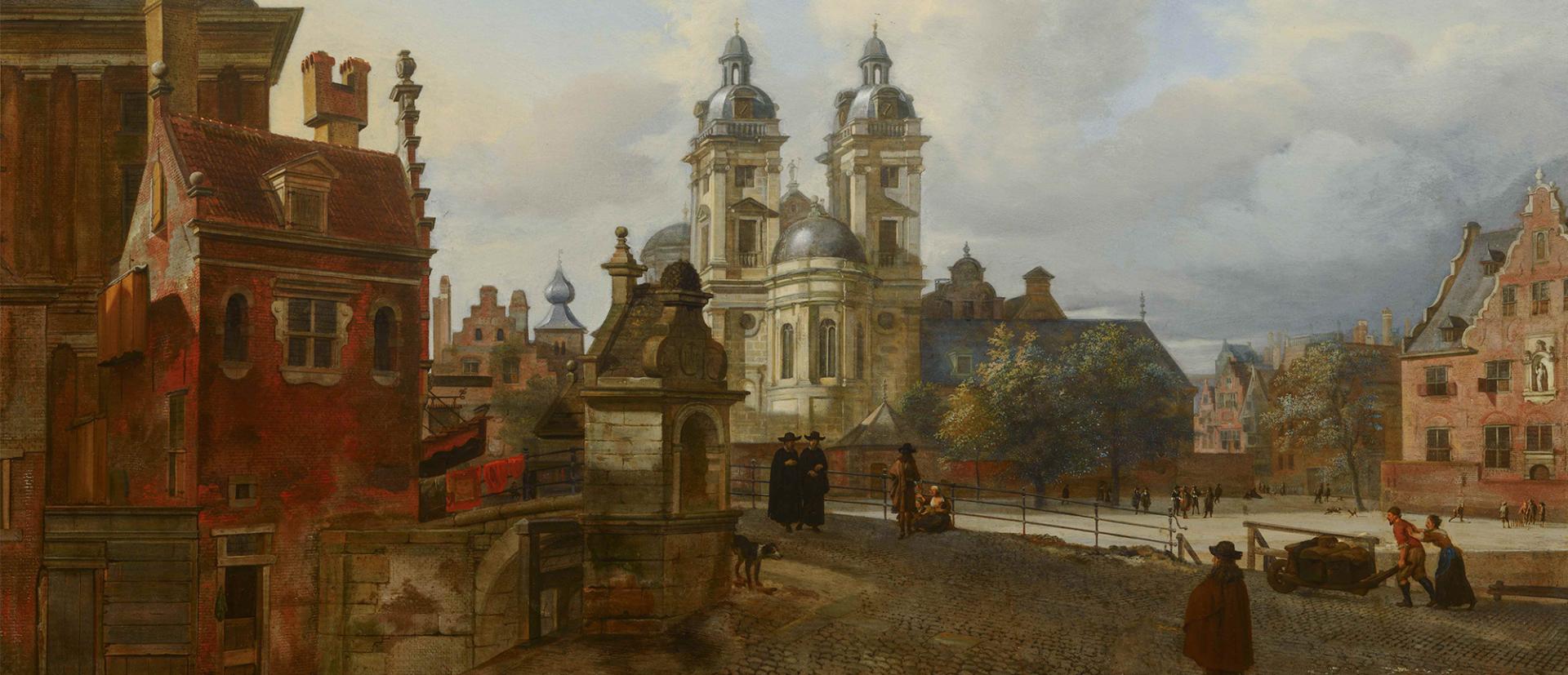Steengracht series of engravings

At the close of 2020 the RKD received a wonderful gift from the Mauritshuis: 250 nineteenth-century prints and drawings depicting works of art in the Mauritshuis collection. Conservation treatment of these works on paper has been completed this month, ensuring their preservation for future generations.
Steengracht series
The gift from the Mauritshuis provides insight into the development of the collection in the early nineteenth century and brings home the need then felt to generate publicity for the museum. The group includes 97 engravings from the publication De voornaamste schilderijen van het Koninklijk Kabinet, te 's-Gravenhage, in omtrek gegraveerd, met derzelver beschrijving (The most important paintings from the Royal Cabinet in The Hague, engraved in outline, with descriptions of each), published in four volumes in 1826-1830. This early museum catalogue was put together personally by the Mauritshuis's first director, Johan Steengracht van Oostcapelle. The series of engravings shows which pictures were considered to be the highlights of the collection around 1830. What makes the 'Steengracht' print series unique is that it also includes the original drawings for the engravings in the catalogue. These were made by Nicolaus Heideloff (1761-1837), who was the 'inspector' (deputy director) of the Mauritshuis.
Acidic board
The decision to transfer the Steengracht print series to the RKD, together with similar prints from the Mauritshuis collection, was made because the institution has the appropriate facilities to care properly for works on paper, and to make them available for research. While the prints and drawings themselves were in reasonably good condition, the tape used to fix them as well as the mount boards had unfortunately become acidic, and in places acid had migrated to the actual artworks. Although some sheets looked fine, others were showing signs of discolouration as well as brown spots. To prevent further degradation, the prints had to be removed from the boards and de-acidified.

2. Drawing of Peasants at an Inn, with brown spots clearly visible, photograph RKD
3. Print in the Steengracht series of A Grocer's Shop by Willem van Mieris (1717) with discolouration, photograph RKD
Conservation by Hoogduin Paper Restorers
To prevent further acid damage, the RKD took all of the works to Hoogduin Paper Restorers for conservation treatment at the beginning of 2021. The prints and drawings were carefully separated from their boards and rinsed in a warm water bath in order to remove the mounting tape and some old repairs. The prints and drawings were then sized using a combination of wheat starch and tylose, and de-acidified. Finally, they were placed separately in transparent acid-free paper of an appropriate standard for permanent storage. The conservation treatment was partly funded by the Mauritshuis, Stichting Boek & Wurm and the Friends of the RKD.

2. Drawing of The Church of St Andrew in Düsseldorf from the Steengracht series, photograph RKD
3. The engraving of The Church of St Andrew in Düsseldorf has been removed from its acidic mount, photograph Hoogduin
Further research
Treatment was completed in early May and the works are now stored at the RKD in an appropriate climate. The prints and drawings will be digitised over the coming year and made available in the RKDimages database with links to the related paintings in the Mauritshuis. In due course further research on the engravings will be undertaken under the supervision of Yvonne Bleyerveld, Senior Curator of Prints and Drawings.

5. The print is sized and de-acidified, photograph Hoogduin
6. Once dry, the prints are then flattened in the press between sheets of blotting paper before being rehoused between sheets of transparent acid-free paper, photograph Hoogduin